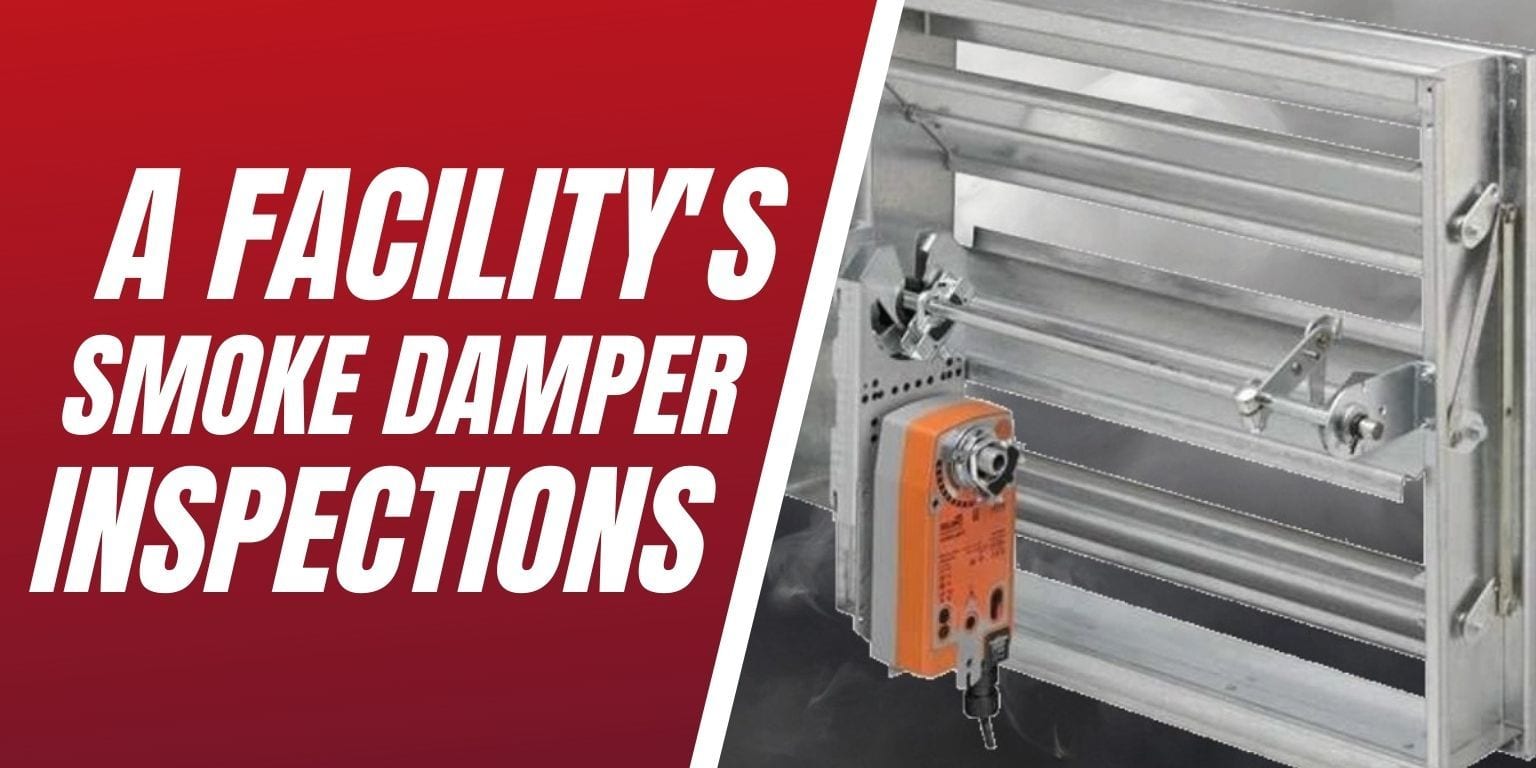
The winter season is right around the corner, which means it’s time to start preparing our buildings for the cold months. During this season, temperatures can drop below freezing causing a facility’s sprinkler systems, water lines as well as other fire and life safety systems to freeze and may not perform the way they were designed. Not to mention, icy roads prove to be an issue when first responders are trying to make their way to the scene of the fire. Because of this, it is important to make sure that your buildings fire and life safety systems are properly maintained.
There are many aspects of a building’s fire and life safety systems that are designed to help prevent the spread of fire as well as keeping occupants safe. Part of that system is the building’s fire and smoke dampers. Dampers are often hidden out of sight, which means they are more likely to be out of compliance. And as fire and life safety professionals, we spend a lot of time talking about the importance of fire damper inspection and repairs. But what about the smoke dampers that help prevent the spread of smoke?
Like fire, smoke can spread quickly and easily through a building. Smoke rises, so one of the fastest ways for it to spread is through a building’s ventilation system. And since smoke inhalation is the leading cause of death during a fire, preventing the spread of smoke is essential to keeping occupants safe during evacuation. So how exactly do smoke dampers work in helping to prevent smoke from spreading?
Smoke dampers are specifically designed and installed in the ductwork and air transfer openings to prevent the passage of smoke between sections. Smoke dampers will work once smoke is detected by a smoke detector, which is typically located in the ductwork as well. The smoke detectors are usually wired to a central alarm panel where an alarm will send a signal to an actuator attached to the smoke damper. The actuator can be located internally or externally of the damper, and is operated either electrically or pneumatically. The actuator will use the jack-shaft and linkage to open and close the blades of the smoke damper.
Pneumatic Actuators: Use air to function properly and will fail if there is:
- No Air to Actuator
- No Airline to Actuator
- Not Enough Air to Actuator
Electrical Actuators: Use power to function properly and will fail if there is:
- No Power to Actuator
- No Power Wired to Actuator
Understanding how smoke dampers works can help you have a better understand of why inspecting and repairing smoke dampers are just as important as fire dampers. It only takes minutes for thick black smoke to fill a hallway or stairwell. By cutting off the passageways for smoke to travel, it will be contained to one specific location. And regardless of whether you are commercial, healthcare, industrial, or in the educational industry, it is critical make sure your buildings smoke dampers are regularly maintained. Otherwise, while firefighters work against the icy conditions, smoke could continue to spread making it more difficult for building occupant to safely evacuate.
A facility smoke damper serves as an important part of a building’s over all fire and life safety system. They are designed to contain and prevent the spread of smoke throughout the ductwork. But In order to do this they need to be properly installed and maintained. And since dampers have a tendency to fail, they need to be tested and inspected regularly. According to NFPA, “dampers should be tested and inspected every four years in non-healthcare facilities, and every six years in healthcare facilities”. When was last time your dampers have been inspected?

